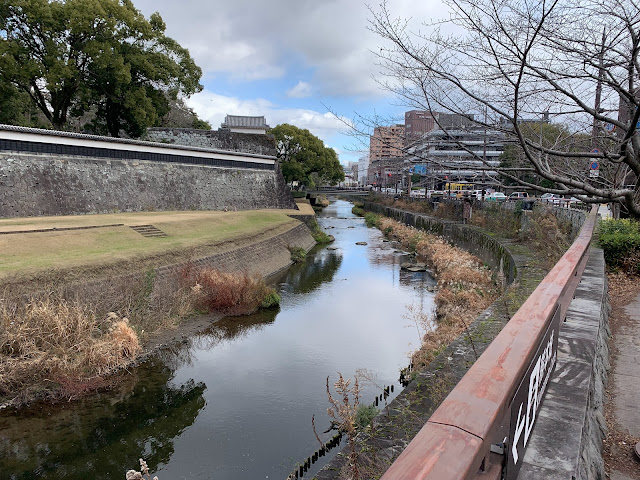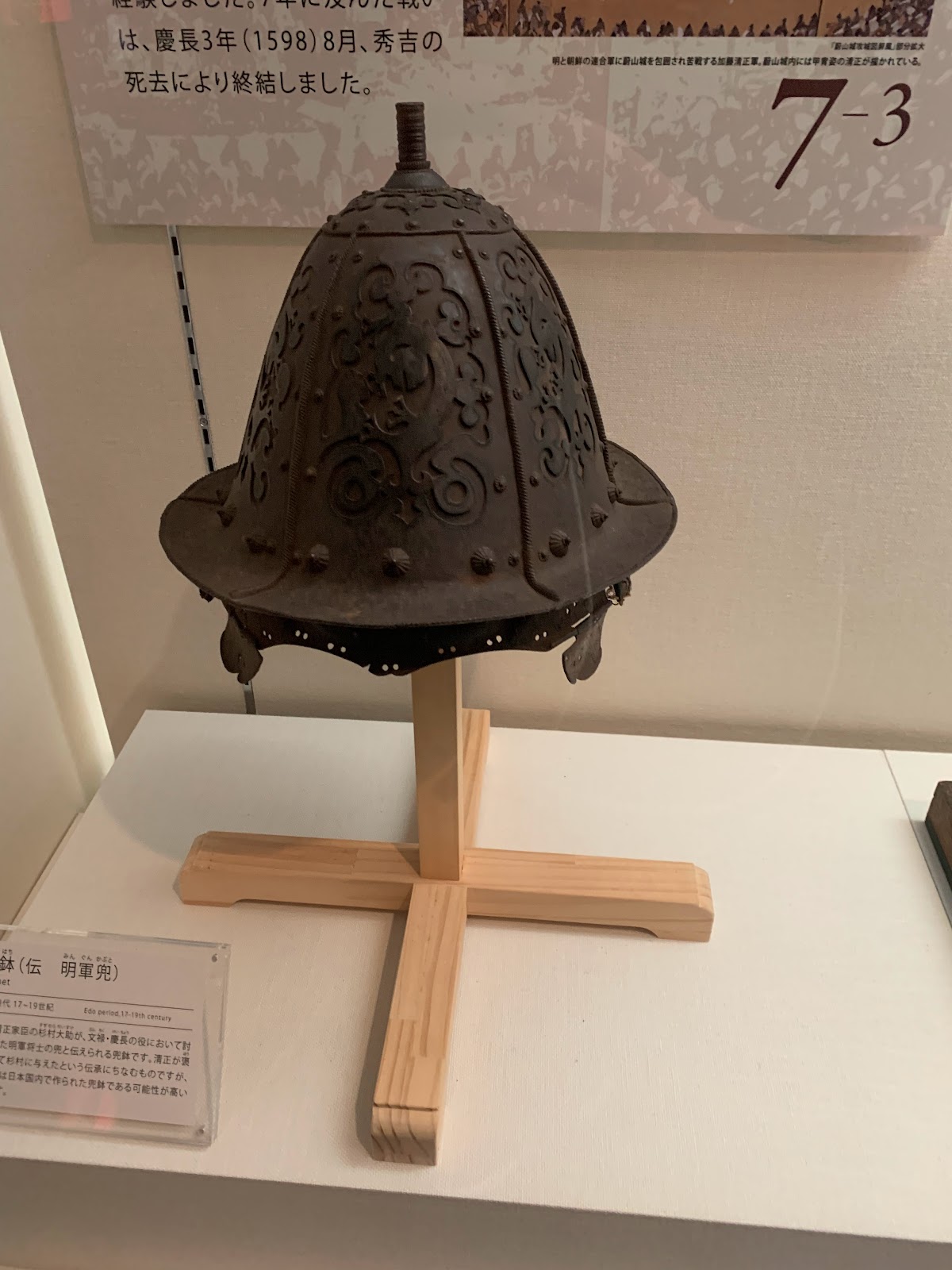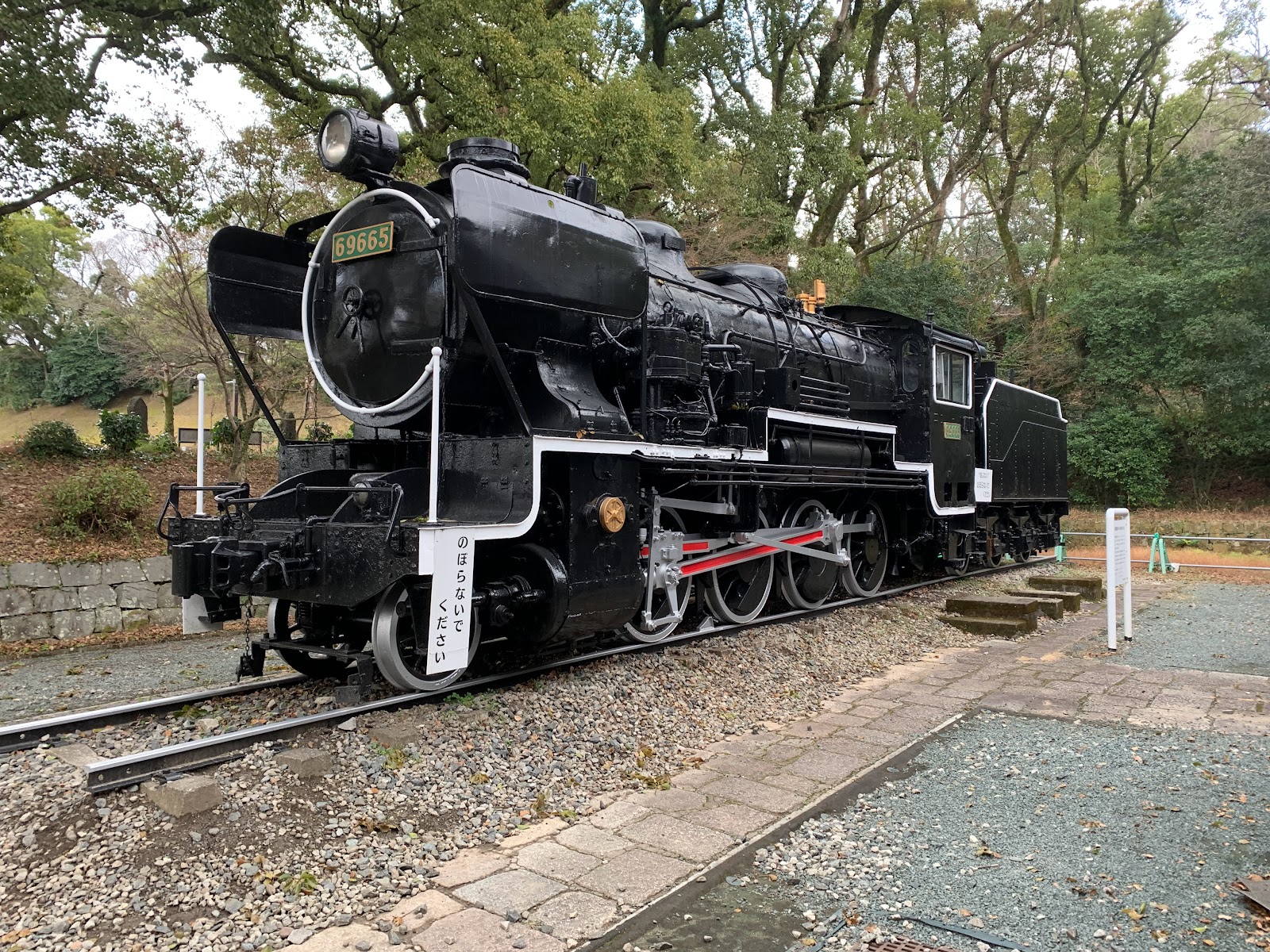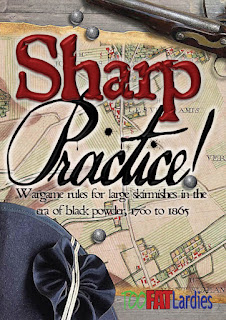Pulling myself together again to continue with the holiday snaps, after
going down to Kagoshima it was then a trip up to the city of Kumamoto. Kumamoto's history is a comparatively modern one ('modern' in a rather academic sense anyway), with the area having very little prominence before the installation of Katō Kiyomasa as the local
daimyō in 1588, who ordered the construction of Kumamoto Castle and established the city as his administrative hub. Kiyomasa's son Tadahiro was deprived of his lands in 1632 and replaced by Hosokawa Tadatoshi, whose line continued to rule until the abolition of the domain system in 1871. Six years later, large parts of the city, and much of the castle, were burned or flooded during a nearly two-month siege by the Satsuma rebels, but the garrison held out until relief arrived. Kumamoto latterly served as a regional military headquarters and was hit by a major bombing raid in 1945, and in April 2016 it was also badly struck by a series of earthquakes, the deadliest to hit Japan since 2011.
Our visit was marked by the onset of snow, something that apparently Kyushu is normally rather too temperate to deal with on the regular, but because of that we opted to remain within the city rather than venture out – as we had hoped to do – to the Satsuma Rebellion museum at Tabaruzaka. (Something perhaps for another time!)
 |
| Kumamoto's castle moat |
Owing to the 2016 earthquake, unfortunately Kumamoto Castle is currently still undergoing some very extensive repairs, and unlike many castles it is not possible to walk the grounds directly. Instead, some semi-permanent scaffolding and walkways coil around the walls up to the keep (itself a 1960s reconstruction).
 |
The keep of Kumamoto Castle. This was rebuilt with mostly modern materials in the 1960s, but even that was not quite enough for it to escape damage in 2016. One of the reconstructed buildings collapsed outright, and the keep was not reopened to the public until 2011.
|
The interior was more focussed on text and explanation than artefacts (there was a board that had an image of a La Hitte 4-pounder gun which I was rather hoping to see, but presumably it's actually elsewhere), but there was the odd piece of particular interest.
 |
| Whose armour this was, I confess I no longer recall. |
One of the neat features was that the app which provided English translations of the display boards was also set up to recognise the sound from the museum's audio explanations, and sync up with a subtitle track; this was particularly nice to have for the long-ish video they had on the effect the Satsuma Rebellion had on Kumamoto.
After a rather filling lunch, we then went out to the Kumamoto City Museum, which was a little unstructured but had a lot more in the way of objects and artefacts. To my great shame I forgot to take any photos of the Hosokawa clan's ceremonial ship, used for journeys to and from Edo,
 |
| The unmistakeable sign of the Hosokawa clan mon on the way to the Suizenji |
 |
| Panoramic views over the pond at the Suizenji |
And with that, it was goodbye to Kumamoto, and indeed goodbye to the southern half of Kyushu; the rest of the trip would take place north of the 33rd parallel.




















I enjoy the travel posts , please do keep them up.
ReplyDelete